Oil
-
Asset managers are the most bearish on oil in more than a decade (according to Bloomberg data)
-
Recession concerns as well as limited demand recovery in China are putting a pressure on crude prices. Potential US debt default is another bearish driver
-
OPEC+ still sees increase in oil market deficit by the end of this year
-
On the other hand, signs of recovery can be spotted on oil prices amid outlook for an improvement in fundamental situation in the second half of the year
-
Brent booked the first weekly gain after 4 consecutive weeks of declines, which was the longest losing streak since November 2021
-
Another source of uncertainty is US production, which remains at elevated levels. On the other hand, number of drilling rigs is not increasing while number of uncompleted rigs has been significantly limited over the past 3 years
-
Goldman Sachs sees a risk of investors rushing out of short positions should prices catch a bid. Simultaneously, Goldman Sachs does not see a chance for speculative position on oil to drop further into negative
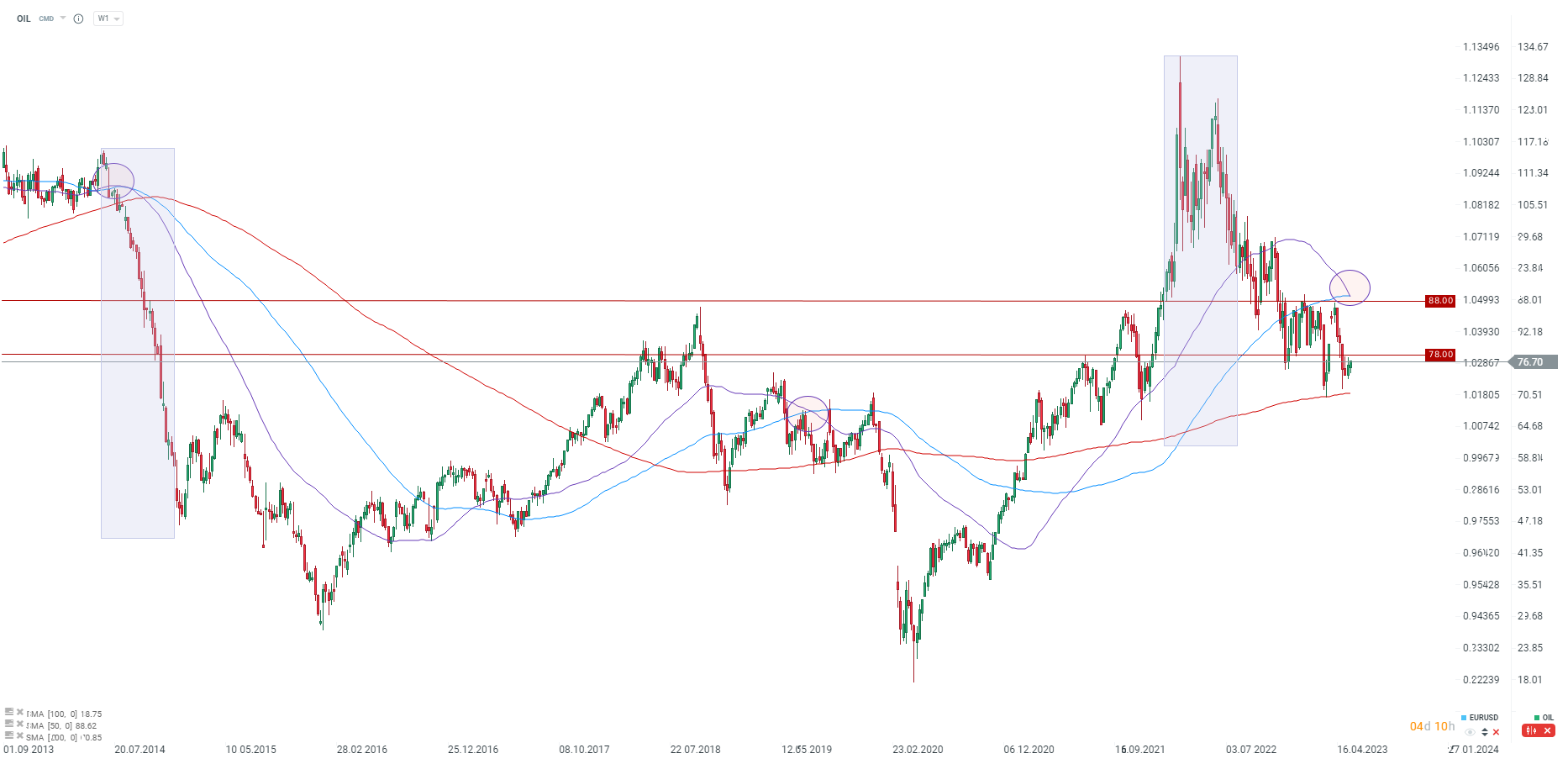 Brent (OIL) booked the first weekly gain after 4 weeks of consecutive declines. Moreover, current week also began on a positive note. On the other hand, a potential bearish signal can be spotted on the chart with 100-week moving average dropping below 50-week moving average. Source: xStation5
Brent (OIL) booked the first weekly gain after 4 weeks of consecutive declines. Moreover, current week also began on a positive note. On the other hand, a potential bearish signal can be spotted on the chart with 100-week moving average dropping below 50-week moving average. Source: xStation5
Start investing today or test a free demo
Create account Try a demo Download mobile app Download mobile app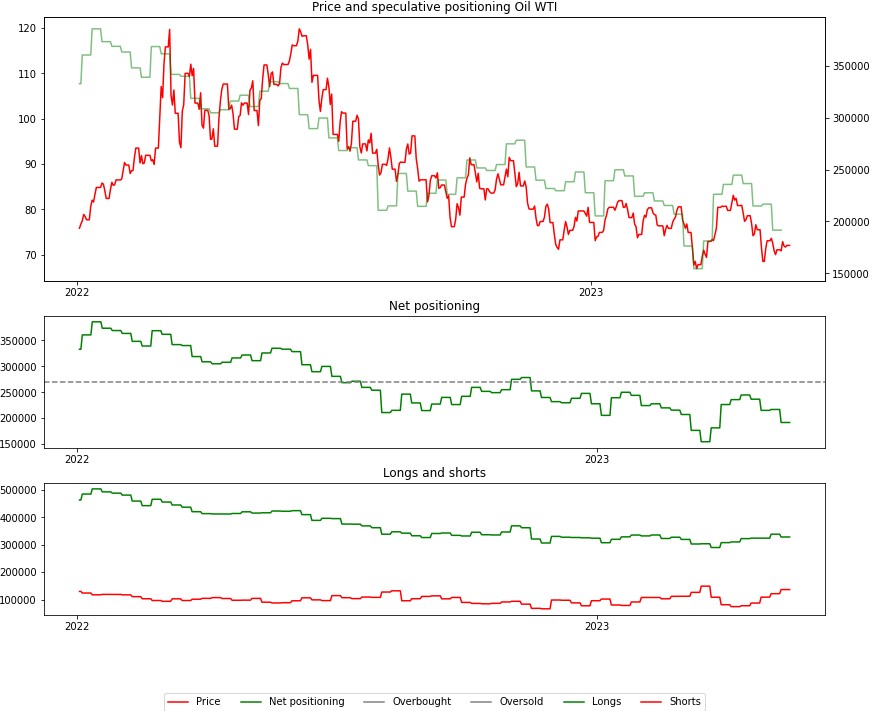 Speculative positioning on WTI is extremely low. Bloomberg reports that aggregated speculative positions are at the lowest level since 2011. Source: Bloomberg, XTB
Speculative positioning on WTI is extremely low. Bloomberg reports that aggregated speculative positions are at the lowest level since 2011. Source: Bloomberg, XTB
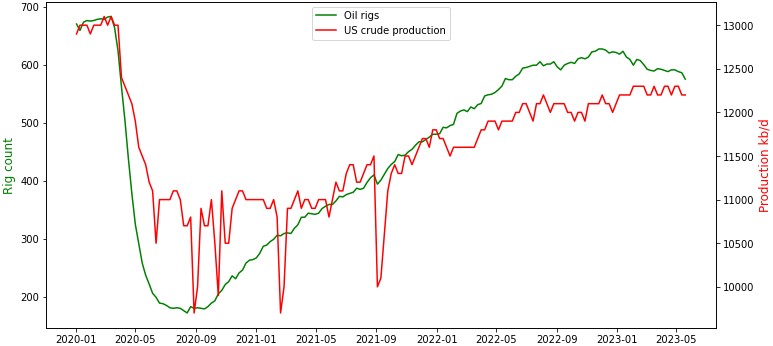 US production began to consolidate. EIA points to further increase in production going forward but data on active and uncompleted drilling rigs paint bleak outlook for returning to pre-pandemic levels. Source: Bloomberg, XTB
US production began to consolidate. EIA points to further increase in production going forward but data on active and uncompleted drilling rigs paint bleak outlook for returning to pre-pandemic levels. Source: Bloomberg, XTB
Gold
-
Gold has taken a hit after a fairly strong rise in the US dollar and yields recently as traders are awaiting the fate of the debt ceiling in the USA
-
We are currently seeing significant differences in the yields of bonds maturing in May and during and after date X (June 1st)
-
Reaching a new debt limit should result in a significant reduction in yields, but at the same time, it may greatly decrease liquidity in the markets after the Treasury Department issues a substantial amount of new bonds
-
Yields indicate the possibility of further downward movement on gold after reaching $1950 per ounce area
-
After a slight rebound, ETFs have once again started to slightly reduce the amount of gold held. There is also a reduction in long positions on gold
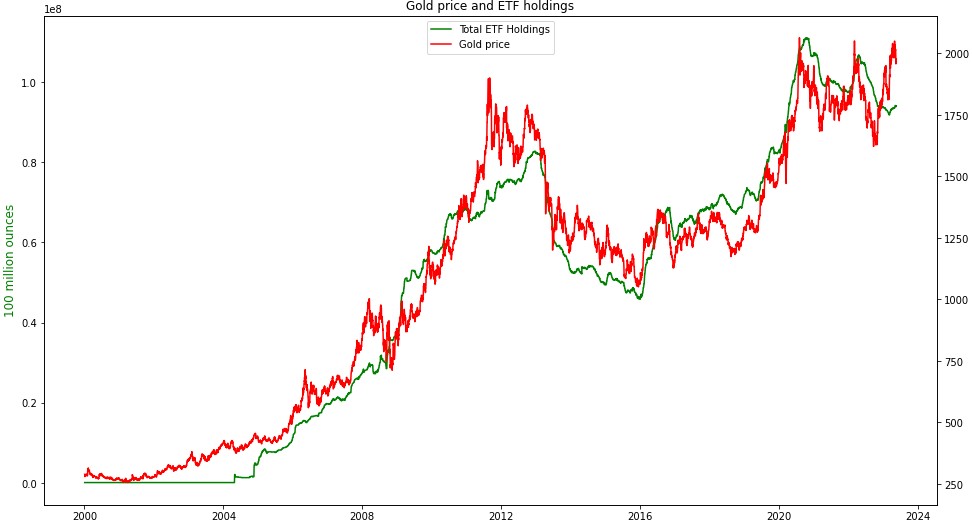 ETFs are once again selling out gold holdings. There is still significant divergence between then amount of gold held in ETFs and gold prices. Source: Bloomberg, XTB
ETFs are once again selling out gold holdings. There is still significant divergence between then amount of gold held in ETFs and gold prices. Source: Bloomberg, XTB
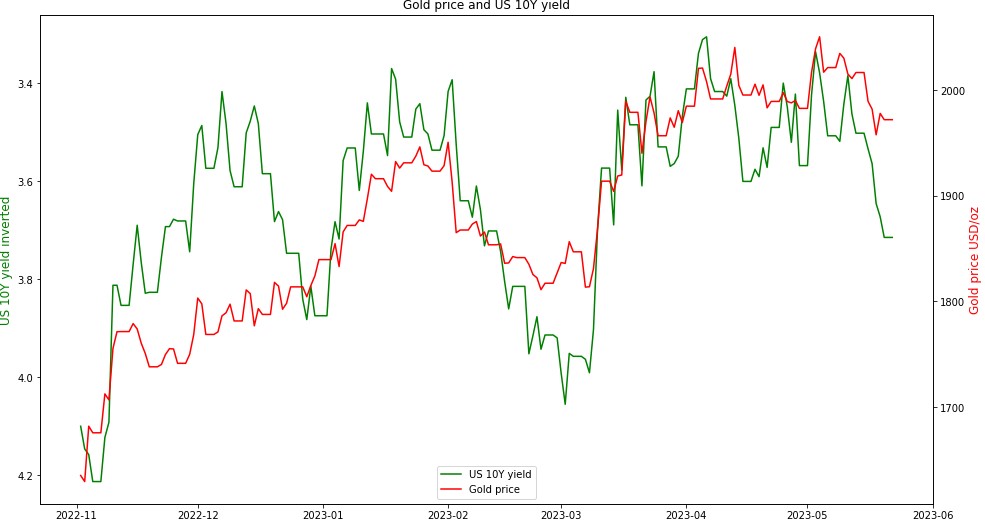 A significant divergence between gold and yields suggests that there is still some room for gold price to fall. Source: Bloomberg, XTB
A significant divergence between gold and yields suggests that there is still some room for gold price to fall. Source: Bloomberg, XTB
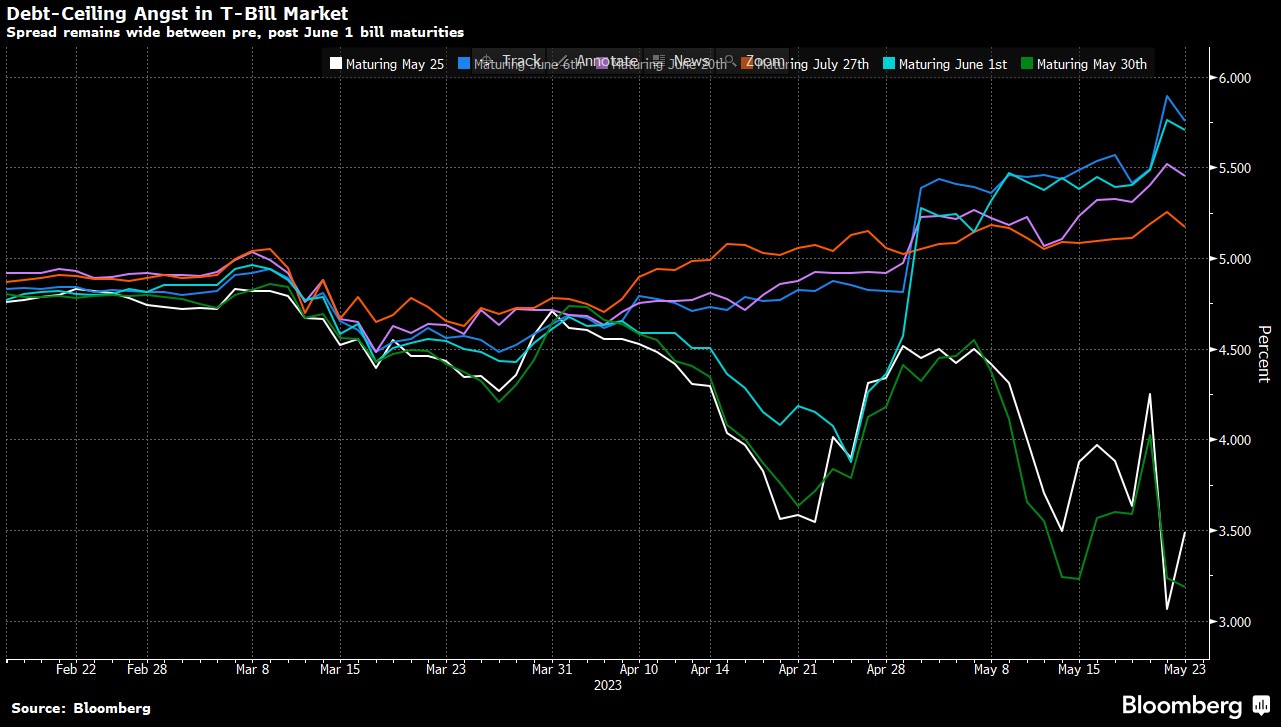 Significant spread between yields on bonds maturing before and after June 1, 2023. Source: Bloomberg
Significant spread between yields on bonds maturing before and after June 1, 2023. Source: Bloomberg
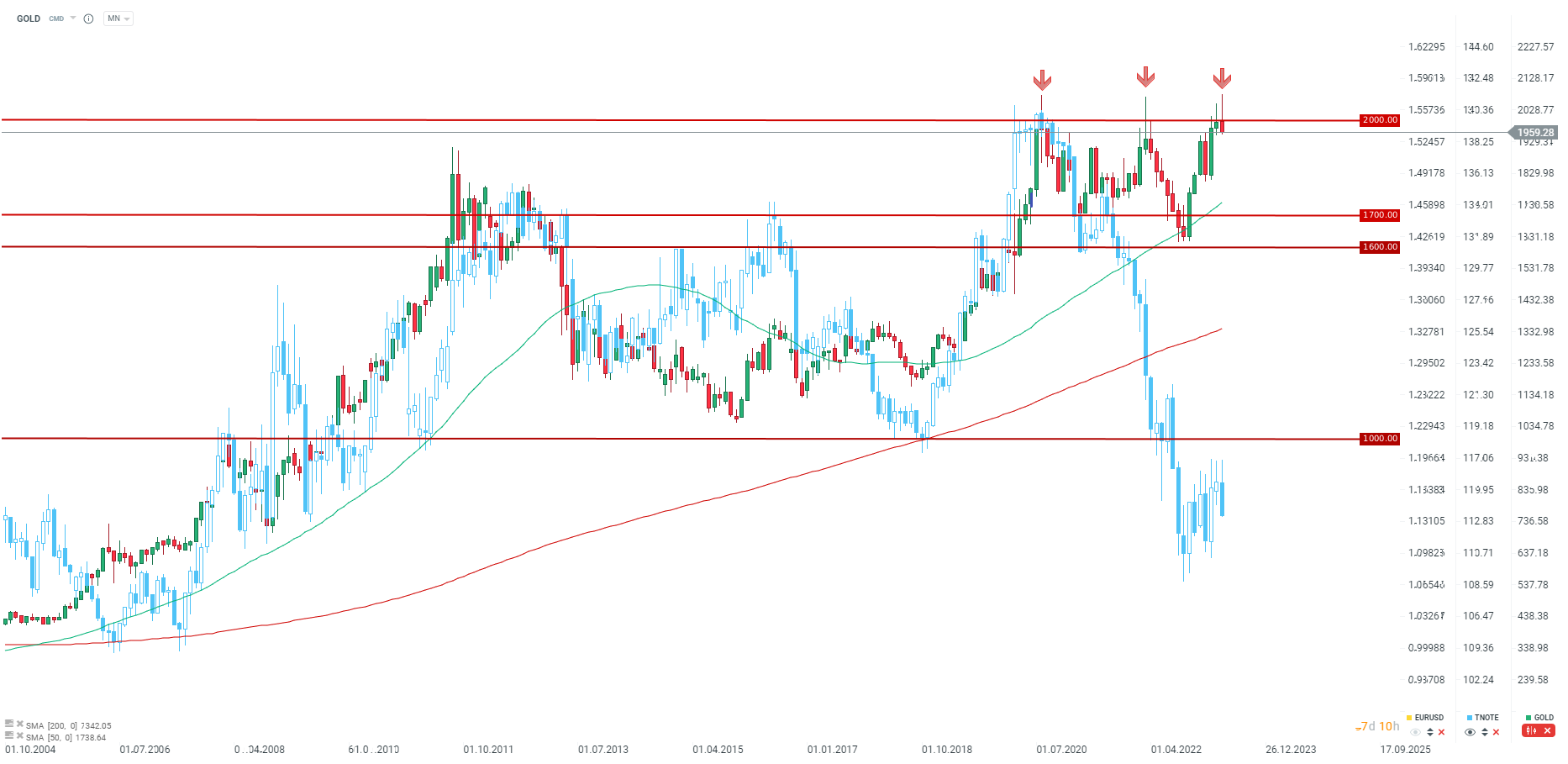 Should gold price finish May's trading lower (below $2,000 per ounce), a potentially strong bearish signal would surface - a triple top pattern. Taking a look at history, however, we can see that drop in yields almost always was accompanied by increase in gold price (2014-2015 is an exception). Source: xStation5
Should gold price finish May's trading lower (below $2,000 per ounce), a potentially strong bearish signal would surface - a triple top pattern. Taking a look at history, however, we can see that drop in yields almost always was accompanied by increase in gold price (2014-2015 is an exception). Source: xStation5
Natural Gas
-
A significant increase in wind power generation in recent days has led to a decrease in the use of gas for electricity production
-
Gas prices have dropped from around $2.6 to $2.3 prior to contract rollover. Prices should increase by approximately 10-12 cents after rollover
-
Rollover can be used by sellers to increase bearish bets on NATGAS. Prices increased slightly after the previous rollover but then a correction started, bringing them down by almost $0.5.
-
After rolling, the key resistance level will be around $2.5 USD, with support expected at around $2.2 USD
-
Seasonality suggests the possibility of sideways movement until around June 5th, followed by a rebound in the second half of June
-
Without a bigger decline in comparative inventories, it will be difficult for a stronger price rebound to occur at the moment
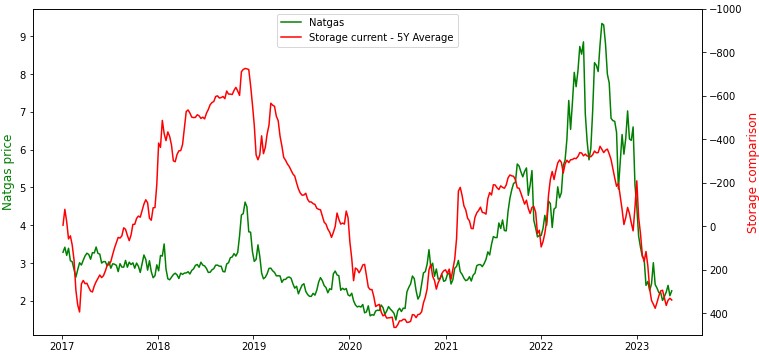 Comparative inventories remain at very high levels. An increase in demand or significant drop in production would be needed to bring them down. Source: Bloomberg, XTB
Comparative inventories remain at very high levels. An increase in demand or significant drop in production would be needed to bring them down. Source: Bloomberg, XTB
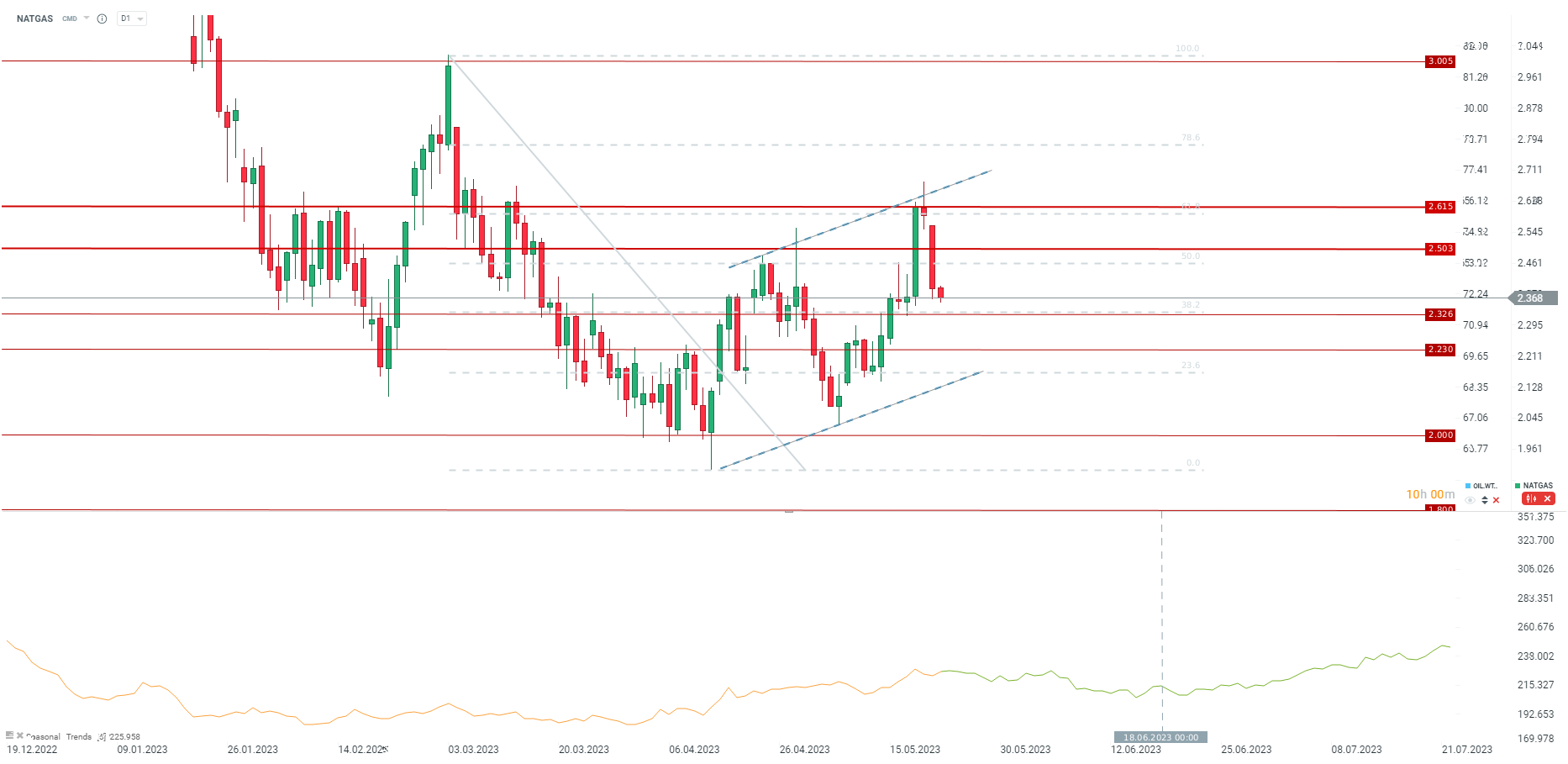 Significant price declines could be spotted after the previous 3 rollovers. Source: xStation5
Significant price declines could be spotted after the previous 3 rollovers. Source: xStation5
Copper
-
Lack of strong recovery in China is causing weakness in the industrial metals market
-
Credit impulse in China has returned to growth, although it remains below the levels seen in September of last year
-
Copper inventories in China and on global exchanges are starting to decline significantly, suggesting a potential shortage of metals in the coming months
-
The nearest strong support level can be found at around $7,900 per tonne, and the weak yuan indicates possible further issues for copper in the near future
-
Seasonality indicates that a rebound may occur in the second half of June
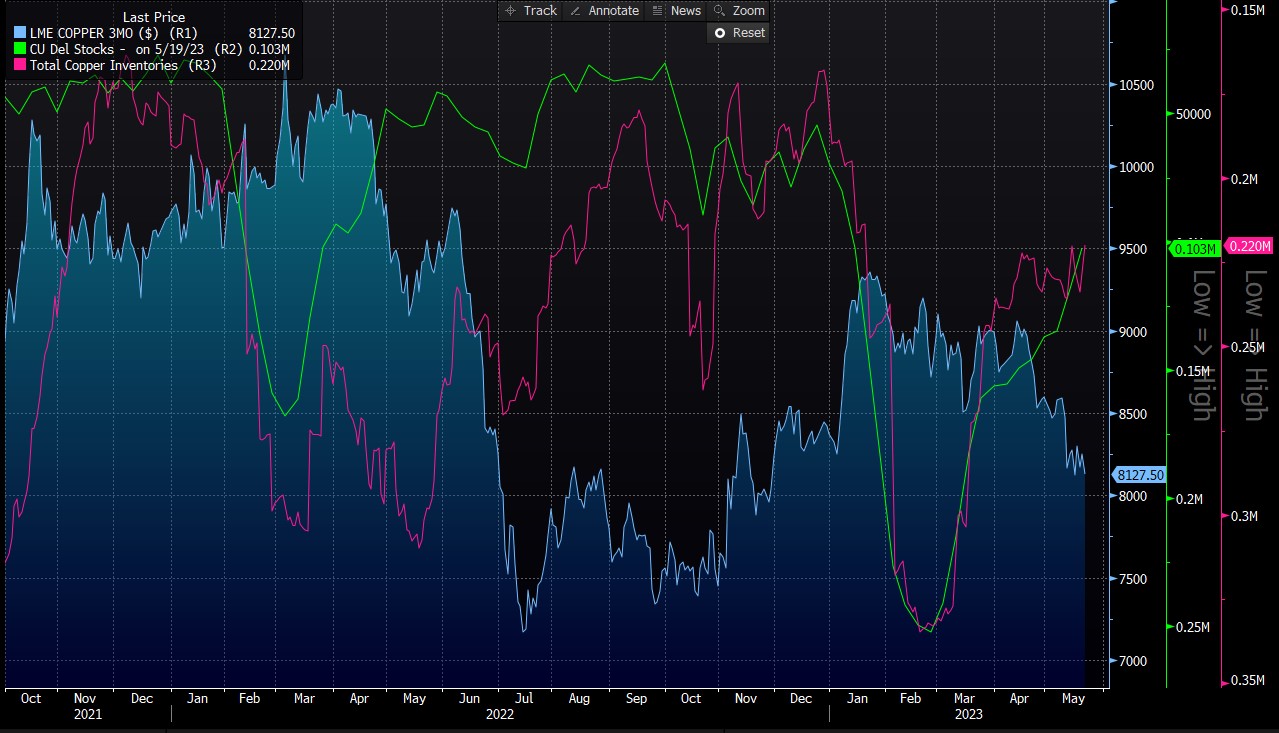 Copper inventories are dropping significantly, what should exert additional upward pressure on copper prices. On the other hand, drop in inventories may be driven with an attempt to bring down stockpiles and not increase them at a later date. Source: Bloomberg
Copper inventories are dropping significantly, what should exert additional upward pressure on copper prices. On the other hand, drop in inventories may be driven with an attempt to bring down stockpiles and not increase them at a later date. Source: Bloomberg
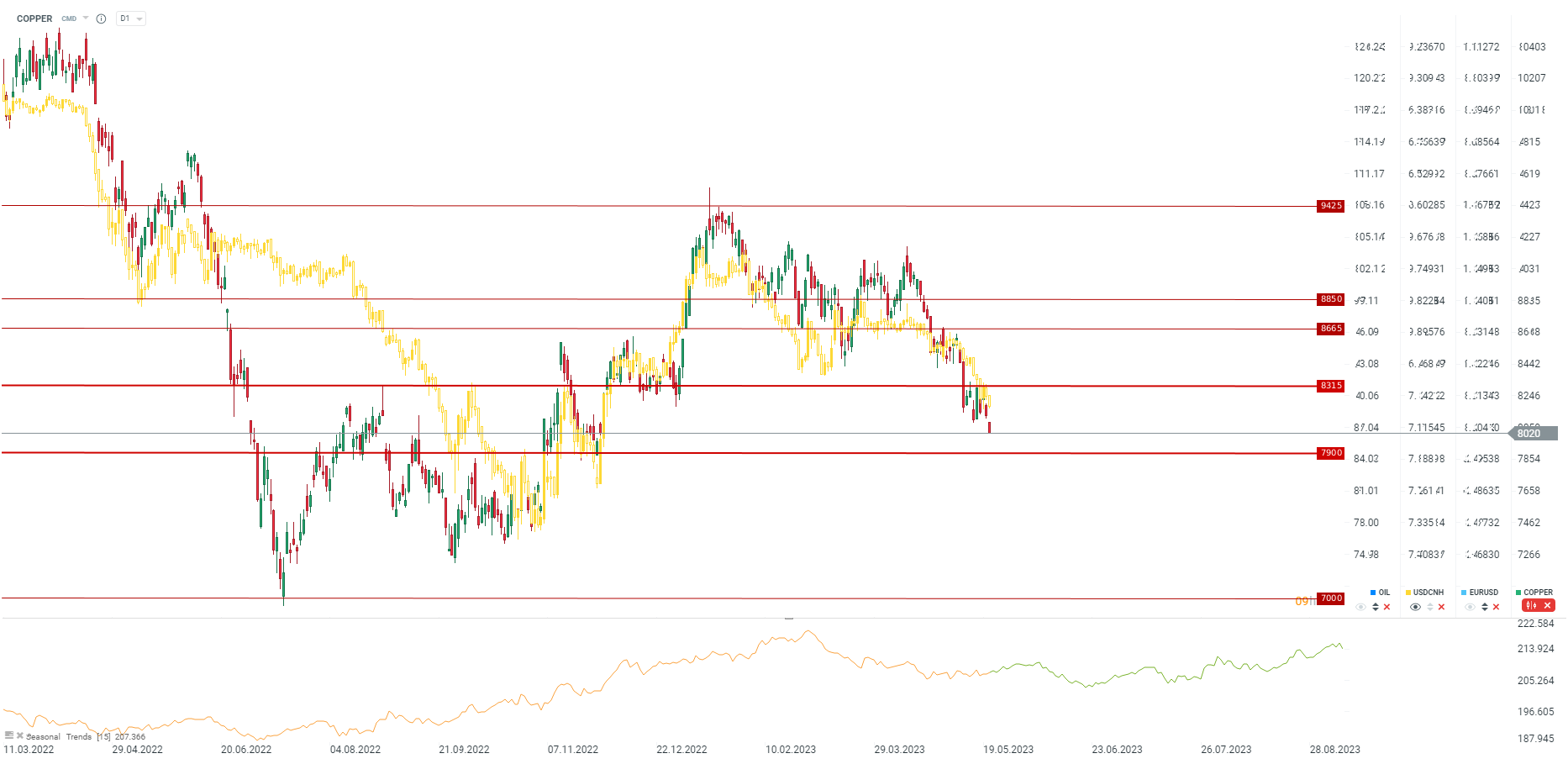 Significant drop in copper prices. The next important support to watch can be found in the $7 900 per tonne area. Source: xStation5
Significant drop in copper prices. The next important support to watch can be found in the $7 900 per tonne area. Source: xStation5
